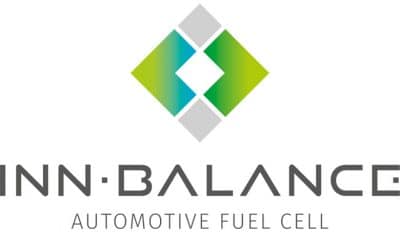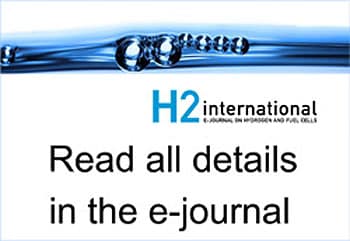
The design of the fuel cell unit has taken inspiration from partner PowerCell’s prior work, a stack called S3. It was developed between 2013 and 2017, as part of FCH JU project AutoStack Core, to serve as a shared automotive stack base in Europe. The INN-BALANCE stack enclosure has been designed to match the orientation of the unit during installation and meet the requirements of the relevant Ingress Protection rating. The idea was to have all electrical connections on one side. Power output will range from 80 to 120 kilowatts.
…
System functions
INN-BALANCE has led to the drafting of operational strategies for the anode, cathode and cooling subsystems.
As for the anode, an integrated ejector-injector unit will be used to operate the device without a recirculation pump. This compact solution can be placed in between the outlet and inlet of the anode. The system will also include a heat exchanger for preheating, so as to avoid condensation when dry, cold hydrogen is mixed with wet, warm nitrogen and hydrogen from the stack outlet. This will provide the anode with a mechanical interface in the direction of the high-temperature cooling loop.
The anode flow passing through the stack will be controlled by a highly precise and fast valve, upstream of the ejector-injector unit, and a stepper motor to power the injector needle. Both will manage the flow based on the pressure supplied to the ejector-injector unit and the adjustments made to the needle. The purge valve (used especially during startup to fast-remove air from the loop) and the bleed valve, both on-off valves, will determine the quantity of hydrogen in the anode loop.
The cathode’s main balance of plant component will be a high-speed turbo compressor by Celeroton. A “weather station” will be installed at the inlet, to record ambient conditions, and a special fuel cell air filter mounted in front of the station, inside the vehicle and connected to the inlet. Pressure at nominal load will be above 1 bar, which will result in high air temperatures at the compressor exit, making it necessary to add intercooling to protect the membrane humidifier from thermal damage.
…
Manufacturing-oriented design
Supply chains and manufacturing processes are currently being simulated to prototype BoP components. This includes several aspects, such as product specifications, alternative materials, the number of parts, production tolerances and shapes. An optimization framework based on concurrent design methods will then be used to improve components. The first year of the project saw not only the creation of an overall strategy to enhance the fuel cell system by integrating supply chain with production and performance management but also the identification of main design parameters and the collection of manufacturing data. Now, the challenge is to expand the database and put expertise into practice.
…
Written by Dr. Marie-Eve Reinert, Steinbeis 2i GmbH, Karlsruhe, Germany, and Dr. Alicia Arce, Fundación Ayesa, Sevilla, Spain, and Dr. Per Ekdunge, PowerCell Sweden AB


























0 Comments